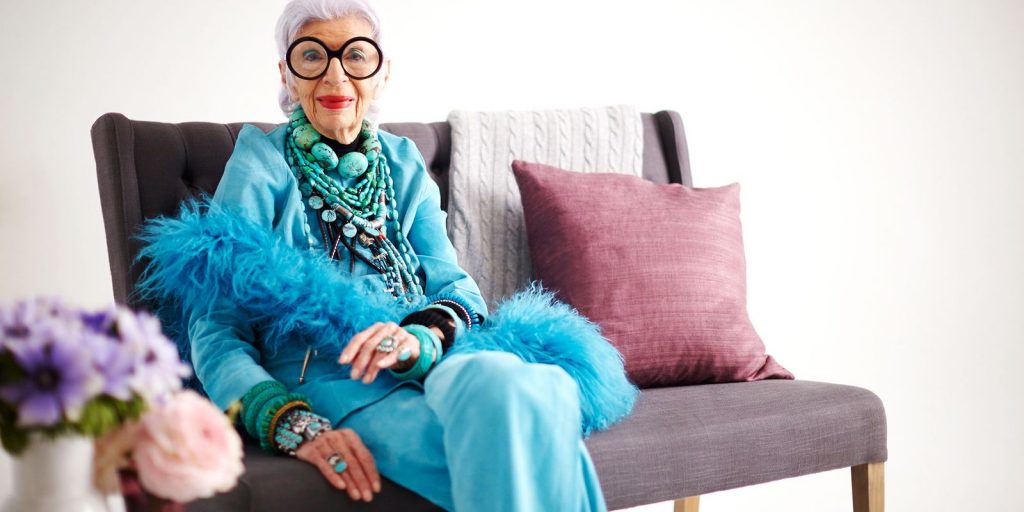
There are few people who wouldn’t be intrigued by Iris Apfel. The nonagenarian fashion icon with statement eyewear, accessories hanging like Christmas decorations, and a unique outlook on life. It is no wonder then why legendary documentarian Albert Maylses focuses on her as subject of his penultimate documentary film, IRIS (2014). Plunging us deep into her creative world, it traces the history of her textile business, her relationship with husband Carl Apfel, and follows her fast-paced lifestyle reminding us that life is an experiment. Animal representations are ubiquitous throughout. But blink and you’ll miss them. By no means the focus, the animals in the film live in the margins, adorning Iris’s life in clothes, accessories, statues, paintings, soft toys and ornaments. In short, they are part and parcel the film’s primary fascination with adornment and Iris’s highly stylised approach to the world, where the surface is crucial for her philosophy of having fun, and combatting the creeping worries that come with old age.
Patricia Aufderheide outlines biographical documentary as “character-driven by definition, but the filmmaker must interpret that character for the viewer.”[1] Undoubtedly, IRIS falls neatly into this sub-genre, as the film is motivated by the extraordinary wisdom and philosophy of Iris Apfel’s creativeness, and Maysles does not simply allow the audience to observe. Rather, he departs from the style of “Direct Cinema” he is notable for, and instead, uses interviews and historical material to reinforce and interpret the footage of Iris shot in his usual observational style. Throughout Maysles exhibits a preoccupation with animal presences, which haunt many of the shots. Although rendered silent by their artifice, the exaggerated, lively and highly stylised appearances of the animals are used by Maysles to underpin this portrayal of Iris as a force of playful excess. For Maysles, these representations are also integral to “the actual construction of social reality”, which Bill Nichols claims is characteristic of documentary, where responses to the ‘reality’ on screen effect change in the real world.[2] In IRIS the centrality of aesthetics in these representations is part of this, inspiring and inviting the audience to view the world as Iris does: a constant experimentation of visual style, which empties objects of meaning, and transforms them into objects of play. Both this and the interpretation of character rely upon Maysles construction of a Camp sensibility in the film.
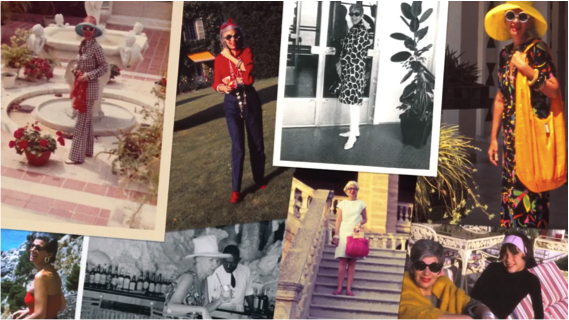
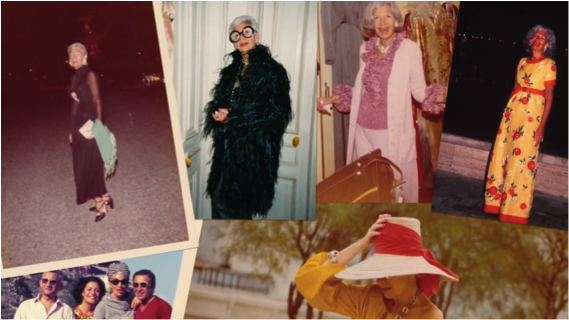
Fig. 1. The various outfits and styles of Iris Apfel. Each shows a concern with highly stylised and exaggerated aesthetics.
Camping with Animals
In her seminal essay, Notes On Camp, Susan Sontag states that “Camp is a vision of the world in terms of style”, empty or indifferent to meaning.[3] It is a statement, which could be attributed directly to Iris, and everything she surrounds herself with, including animal objects. However, due to their pervasiveness within human culture, great levels of meaning have been attached to animals and animal representations, so to slight this and make them Camp Maysles draws the audience’s attention away from anything other than their purely aesthetic qualities. Whilst Sontag claims that “Nothing in nature can be campy”, Maysles’ use of animals in this way shows how some things from nature can become Camp. (Sontag, Camp, para. 7.)
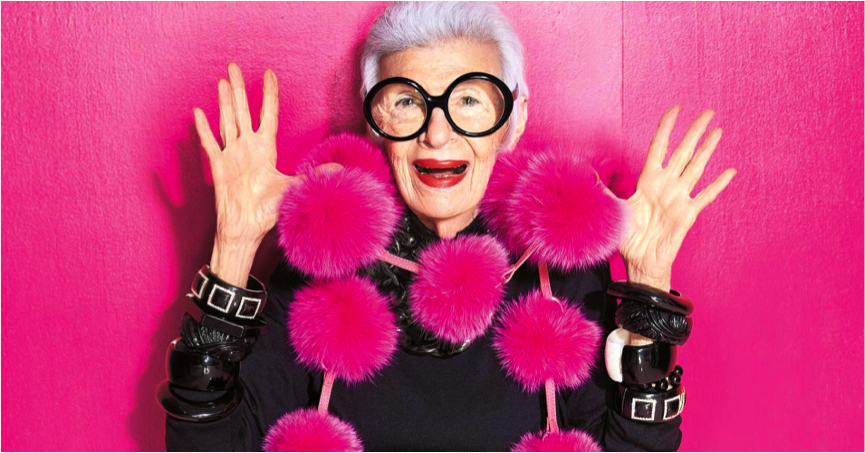
Animal Sacrifice at the Altar of the Accessory
Iris’s mother “worshipped at the altar of the accessory”, and by worshipping at the same altar in his film, Maysles produces a Camping of animals. Using close-ups the audience’s attention is drawn directly to the animals that form the visual basis of Iris’s accessories: a crocodile (fig. 2), owl (fig. 5), dragonfly (fig. 6), frogs (fig. 3), and ladybirds (fig. 4). Occasionally, the shot rests upon these images for seconds at a time, with no voice-over or other speech. Forcing the audience to consider only the surface of these representations invites an acknowledgment of animal form rather than function. In the case of the crocodile bracelet (fig. 2), Maysles uses an extreme close-up of it, with a soft focus that detracts attention from the pieces in the foreground. Directing the audience’s attention more precisely towards the animal forms, Maysles emphasizes their visual style, and empties them of meaning. This concern with style over substance is characteristic of Camp, and so transforms the animal into a Camp object.
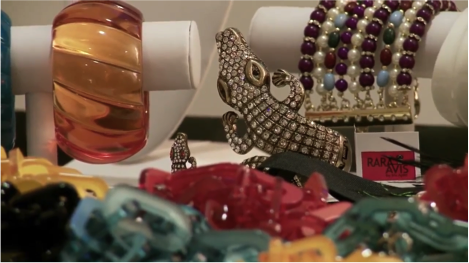
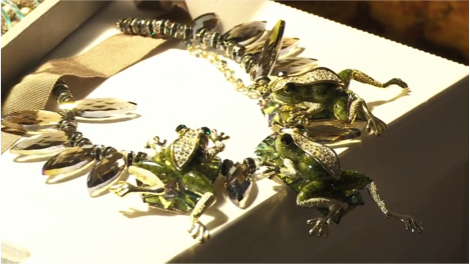
Fig. 2. Crocodile Bracelet Fig. 3. Frog Necklace
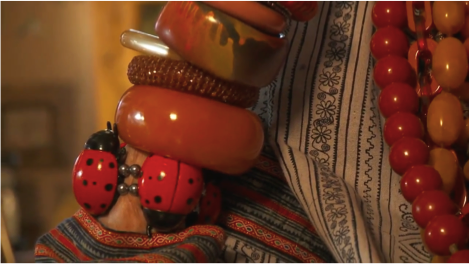
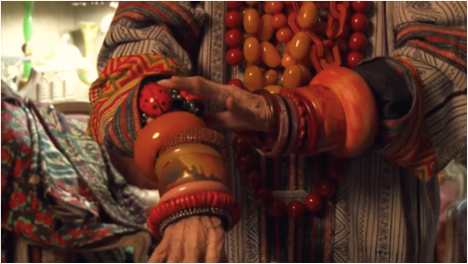
Fig. 4. Ladybird Bracelet
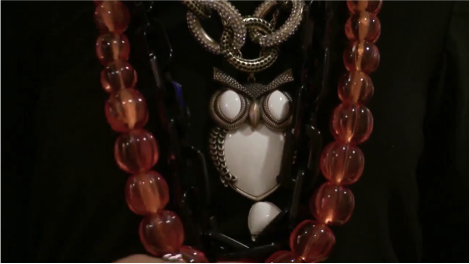
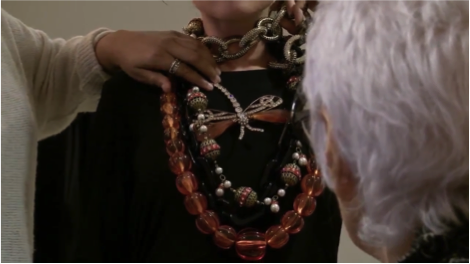
Fig. 5. Owl Necklace Fig. 6, Dragonfly Necklace
Other times, the shots of the accessories are accompanied by the sound taken from interviews with fashion experts and friends of Iris, discussing her style and playful approach to life. Sontag states that Camp is an “aesthetic experience of the world”, and Maysles uses the objects themselves as aesthetic experiences of these interpretations. (Sontag, Camp, para. 38.) Accordingly, the animal representations in these objects become Camp and using shots where Iris wears these accessories, their literal attachment to her body becomes a figurative attaching of their Camp sensibility to her identity. Their Camp quality makes the animal representations “playful, anti-serious”, as “The whole point of Camp is to dethrone the serious.” (Sontag, Camp, para. 41.) Maysles uses animal representations as such to interpret Iris as a playful creative, and to support the film’s message that by engaging with style and aesthetics we too can make life a little less dull, and combat the seriousness that comes with growing old.
The Camp prioritization of aesthetics over species functionality is apparent when Iris is using accessories to style an outfit on somebody else; she experiments with different necklaces, switching from an owl (fig. 5) to a dragonfly (fig. 6). The close-up of the owl cuts to Iris’s face as she gazes at her arrangement, and a cut back to the accessories reveals the swapping of the owl for the dragonfly. Without disturbing the scene, Maysles strikes, as best he can, a parallel in colour and composition. As a result, the intrusive presence of Iris in the shot of the dragonfly stands out, centering the switching of the owl for the dragonfly on her creative intervention. The audience is required to recognize only the animals’ difference in visual style and structural composition. As Camp objects the rigidity of structures, such as species differences, becomes secondary to their function as aesthetic objects.
This appeals to the persistent message of the film that wants the audience to be inspired by Iris’s view of the world, who believes homogenisation and strict rules are damaging. As Camp objects they offer, “for art (and life) a different — a supplementary — set of standards.” (Sontag, Camp, para. 34.) Camp animals become objects of experimentation, emptying them of meaning and subordinating organizing structures, such as species, which confine them to a ‘truth’. By sacrificing the animal at the altar of the accessory, Maysles seeks to inspire and invite the audience to adopt Iris’s aesthetic and stylized approach to life, where we live with fewer structural rules.
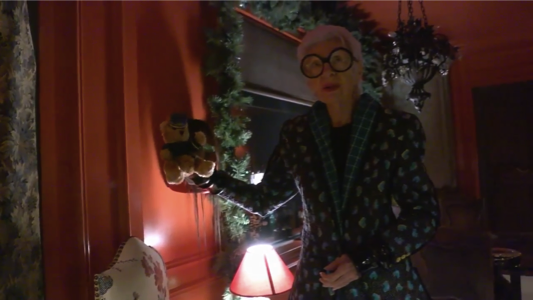
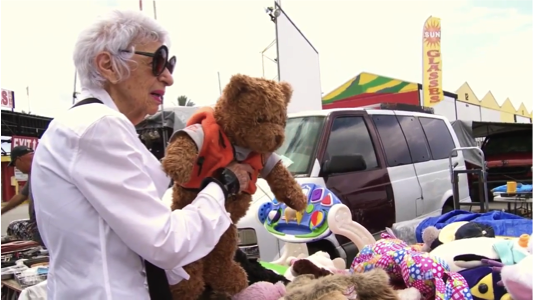
Fig. 7. Iris and her bear from the Ritz & Iris finds a bear at the market. The soft toys in the film express a kind of regression to childhood in Iris to also express her playful and less serious approach to life.
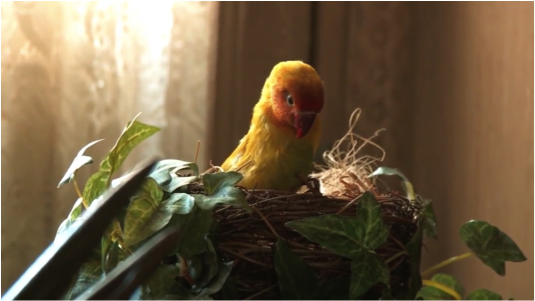
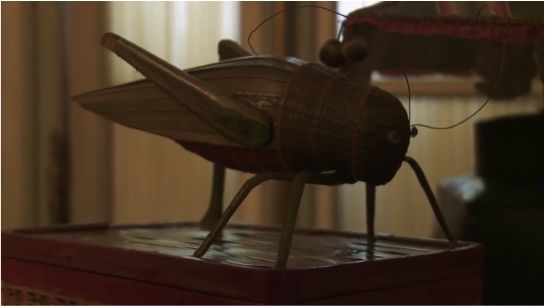
Fig. 8. The parrot & the grasshopper. Iris uses ornaments to furnish her home like accessories adorn her appearance. These are just two examples of more animals used as aesthetic objects.
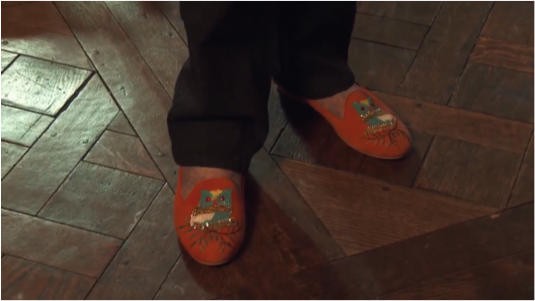
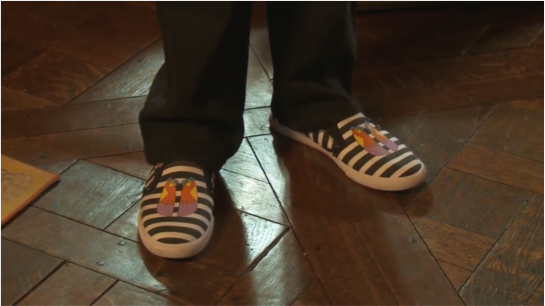
Fig. 9. The shoes Iris designs feat. birds. Iris uses animal in shoes she designs herself. Another example of how the animal form functions as decoration.
Camp and Kitsch: the Seagull, the Dog and the Bear
The animals in the film are not all void of meaning though. In these cases their Camp stems from a “love of the unnatural: of artifice and exaggeration.” (Sontag, Camp, para. 2.) We see this in both the ornamental statues of the dog holding the bowl (fig. 10), and the bear holding the platter (fig. 11). Their Camp comes from the exaggeration of their artifice, manifested in their anthropomorphizing, standing on their hind legs and holding objects for items to be placed on. Hermann Broch, in his essay on kitsch, states, “kitsch represents falsehood.”[4] The unnatural appearances of the animals here not only turn them into objects of Camp, but their self-aware falsifying of animality means they are kitsch. They embody a system of working beautifully, of being highly exaggerated, rather than working well and to a ‘true’ experience. (Broch, Kitsch, p. 63.) However, these representations reveal something beyond identification with Iris.
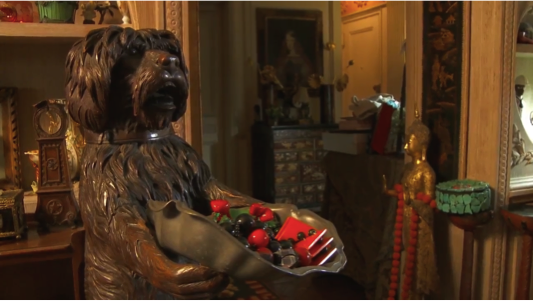
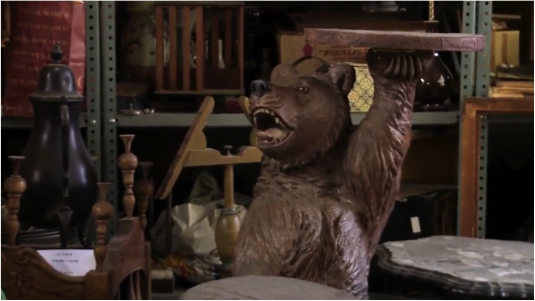
Fig. 10. Dog Statue Fig. 11. Bear Statue
Sontag claims, “To perceive Camp in objects and persons is to understand Being-as-Playing-a-Role.” (Sontag, Camp, para. 8.) These animals are not animals, but “animals”. They play the role of animal that has been inscribed upon them. Acknowledged as kitsch means understanding that this role is borne from imitation, where the piece copies a basic model of what animals are considered to be. (Broch, Kitsch, p. 73.) In both, a medium-shot shows the animals holding vessels, offering them up to an imagined master, which renders them looking subservient. The fact that one is a dog and the other is a bear shows a generalized animal exploitation, where human dominance extends, not only to domesticated animals, but to wild ones too. Understanding these representations as Camp is to understand the animal here as playing a role. As kitsch, this role for animals is “based on imitation”, a copy that shows the basic model of animals in Western culture celebrates and extends from human dominance. (Broch, Kitsch, p. 73.)
There is one instance where Maysles manages to Camp an animal in nature. When Iris discusses her history, Maysles includes Carl Apfel’s old 16mm footage from their travels. It is a montage of footage where one shot shows a seagull soaring through the air over a backdrop of the mountains (fig. 12 & 13). Once again we are left looking at the image of an animal, but this time, it is alive. The amateurish footage is markedly different from the rest of the film, and features obscure sixties psychedelic music from Iranian beat-influenced band The Golden Ring. Edited in such a way the footage is comparable to Wes Anderson’s cinematic style, which harks a kind of nostalgia and fondness for out-of-date eras (fig 14 & 15). This enhances the visual appeal of the scene, turning the seagull into an object of pleasure. Edited as such, the historical footage works cohesively with the rest of the film’s style and concern with Camp sensibility. Maysles produces an original Camp, and does not just expose or play upon it as in the other examples. Here, the seagull appears such that it becomes Camp in nature, ultimately challenging Sontag’s claim that “Camp taste effaces nature”. (Sontag, Camp, para. 13.)
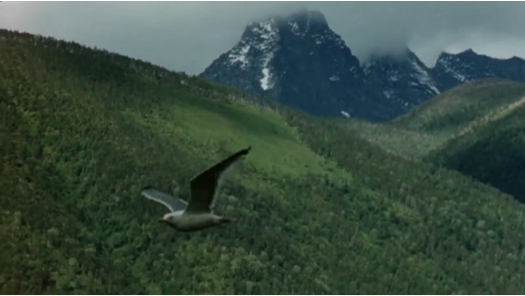
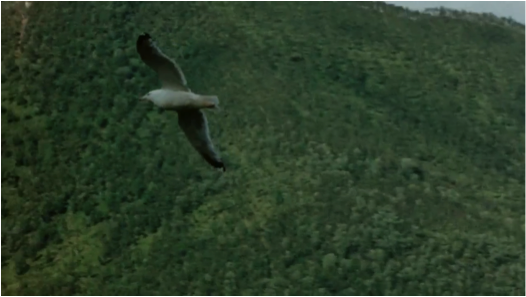
Fig. 12. Carl’s 16mm Footage Fig. 13. Carl’s 16mm Footage
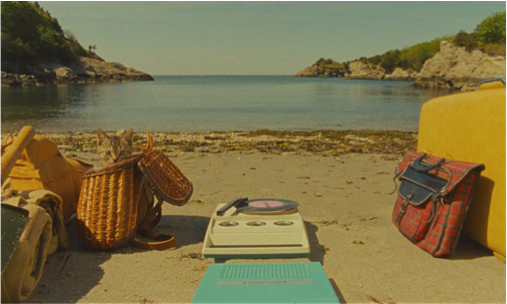
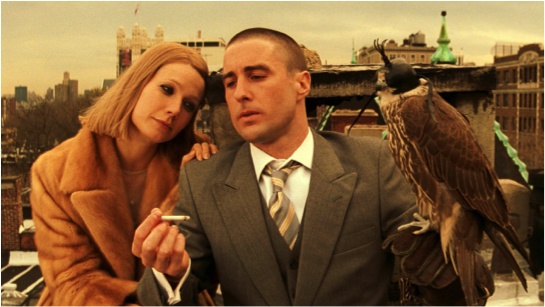
Fig. 14. Wes Anderson’s Moonrise Kingdom Fig. 15. Wes Anderson’s The Royal Tenenbaums
Anyway, I Don’t Happen to Like Pretty
As the film ends we are reminded once more of Iris’s aesthetic philosophy, and the representation of animals ties perfectly into this. She says that to get by and be attractive, if you’re not pretty, “you have to develop something, you have to learn something, and you have to do something.” She believes in an active engagement in the world of aesthetics, and because this engagement can be taken into old age, unlike natural beauty, it brings with it the fun and vibrancy of a play that resists the seriousness of growing old. Forcing the audience to consider the animal form rather than a deeper meaning imbues them the Camp sensibility that is concerned, like Iris, with an active engagement and aesthetic experience of the world. It reveals new standards of approaching and representing the animal in art, where rigid structures become subordinate to a playful experimentation of aesthetics. The animals in the film not only exemplify Iris’s active approach to stylization and characterize Maysles’ subject, but also inspire the audience to invite a similar force of playfulness to bear on their own lives.
Reading them in terms of Camp shows how representations of animals carry with them a removal of the animal from nature. The exaggeration of aesthetics exposes the roles inscribed upon them and as kitsch, a constant reinscription through representation is exposed. It shows that representations of animals are consistently mediated by the culture they are produced within, thus removing them from nature. Whilst this suggests that Camp animals must be viewed, as Sontag believes, disconnected from Nature, the seagull reveals a resistance to this. It is an animal, Camp and set in nature, whilst becoming part of the culture of cinema. Maybe then, it would be better to say that nature and things in nature can be Camp, but this only occurs by slighting its naturalness as it becomes captured by and within a cultural mode.
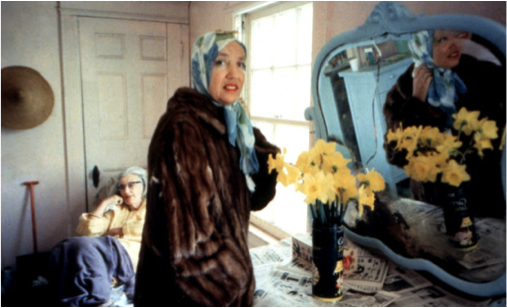
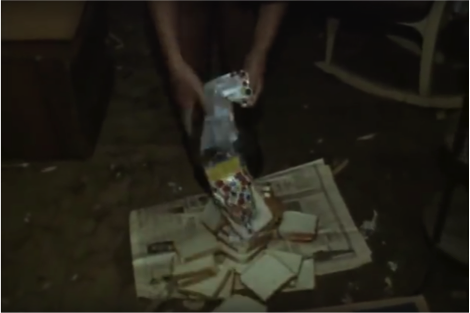
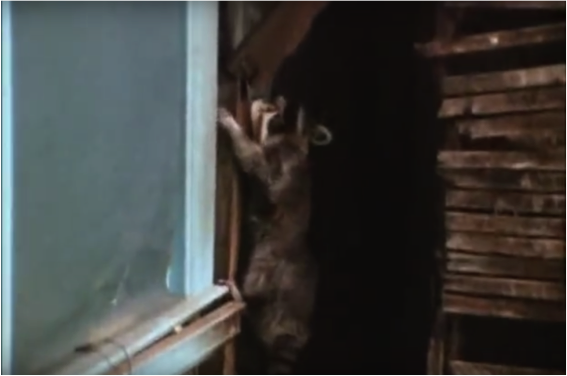
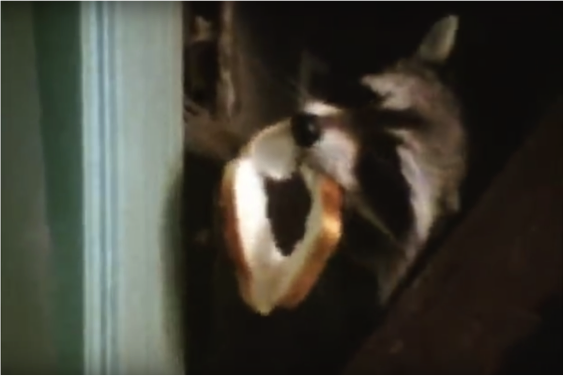
Fig. 16. Grey Gardens Fig 17. Little Edie feeds wild animals in the attic. Fig 18. A raccoon climbs the Beale home with a slice of white bread.
Most importantly, by occupying a latent and marginal position in the documentary these animals can be read as Camp objects. Acknowledging them as such shows how Maysles utilizes their visual status to characterize Iris and invite the audience to understand the world in terms of playful excess. They become integral to the ‘truth’ about the subject that biographical documentary is so concerned with, reinforcing Maysles representation of Iris. It is reminiscent of the way Maysles uses animals in the (coincidentally Camp) classic Grey Gardens (1975) to interpret the lives of Edith Bouvier Beale and Edith ‘Little Edie’ Bouvier Beale. Rather than being artificial, Maysles focuses upon the animals’ liveliness and their ability to transgress the boundaries between the wild and domestic spheres to characterize the Beale’s own lives as disordered. It seems then that animals, whether alive, dead, artificial, full of meaning, or carrying none at all, remain intrinsic to a documentary’s essential message.
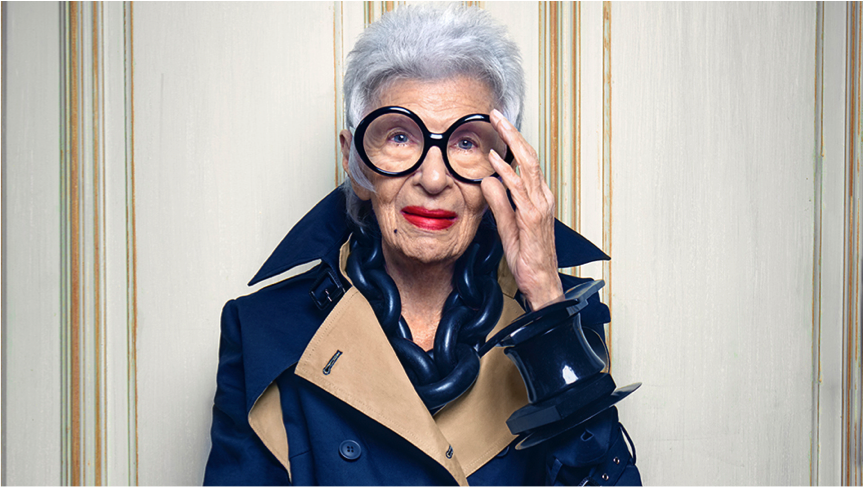
Endnotes
[1]Patricia Aufderheide, Documentary Film: A Very Short Introduction (Oxford: Oxford University Press, USA, 2007) p. 95.
[2]Bill Nichols, ‘The Domain of Documentary’ in Representing reality: Issues and concepts in documentary (Bloomington: Indiana University Press, 1992) pp. 3–31 (p. 10).
[3]Susan Sontag, Notes On ‘Camp’ (1964), <http://faculty.georgetown.edu/irvinem/theory/Sontag-NotesOnCamp-1964.html> [accessed 14 January 2017] (para. 8 of 58).
[4] Hermann Broch ‘Notes On The Problem Of Kitsch’, in Kitsch; The World of Bad Taste, ed. by Gillo Dorfles (New York: Universe Books, 1970) pp. 49-76 (p. 49).
Bibliography
Aufderheide, Patricia, Documentary film: A very short introduction (Oxford: Oxford University Press, USA, 2007)
Dorfles, Gillo, Kitsch; The World of Bad Taste., 2nd edn (New York: Universe Books, 1970)
Nichols, Bill, Representing reality: Issues and concepts in documentary (Bloomington: Indiana University Press, 1992)
Sontag, Susan, Notes On ‘Camp’ (1964), <http://faculty.georgetown.edu/irvinem/theory/Sontag-NotesOnCamp-1964.html> [accessed 14 January 2017]
Further Reading
Aloi, Giovanni, Art and animals (London: Palgrave Macmillan, 2011)
Apfel, Iris, Iris Apfel official (@iris.Apfel) • Instagram photos and videos, <https://www.instagram.com/iris.Apfel/?hl=en> [accessed 14 January 2017]
Baker, Steve, Carol Adams J Foreword, and Carol J. Adams, Picturing the beast: Animals, identity, and representation (United States: University of Illinois Press, 2001)
Corner, John R., The art of record: A critical introduction to documentary, 2nd edn (New York, NY: Distributed exclusively in the USA and Canada by St. Martin’s Press, 1996)
Renov, Michael, The subject of documentary (Minneapolis: University of Minnesota Press, 2004)